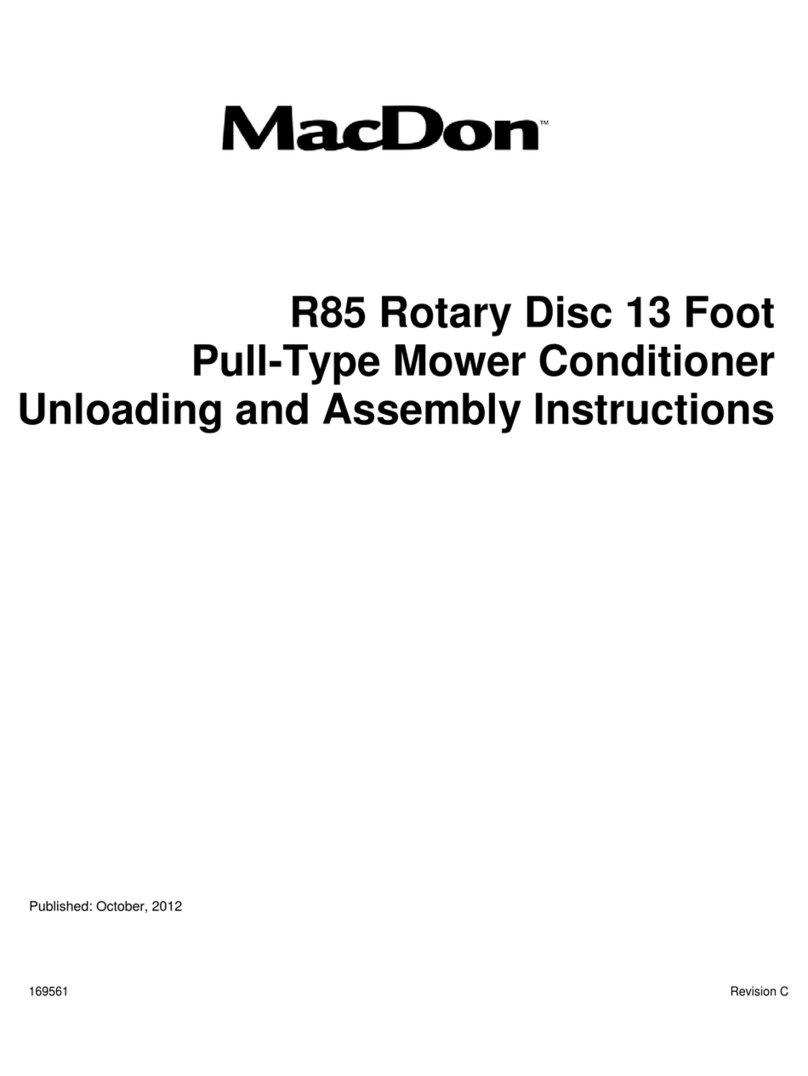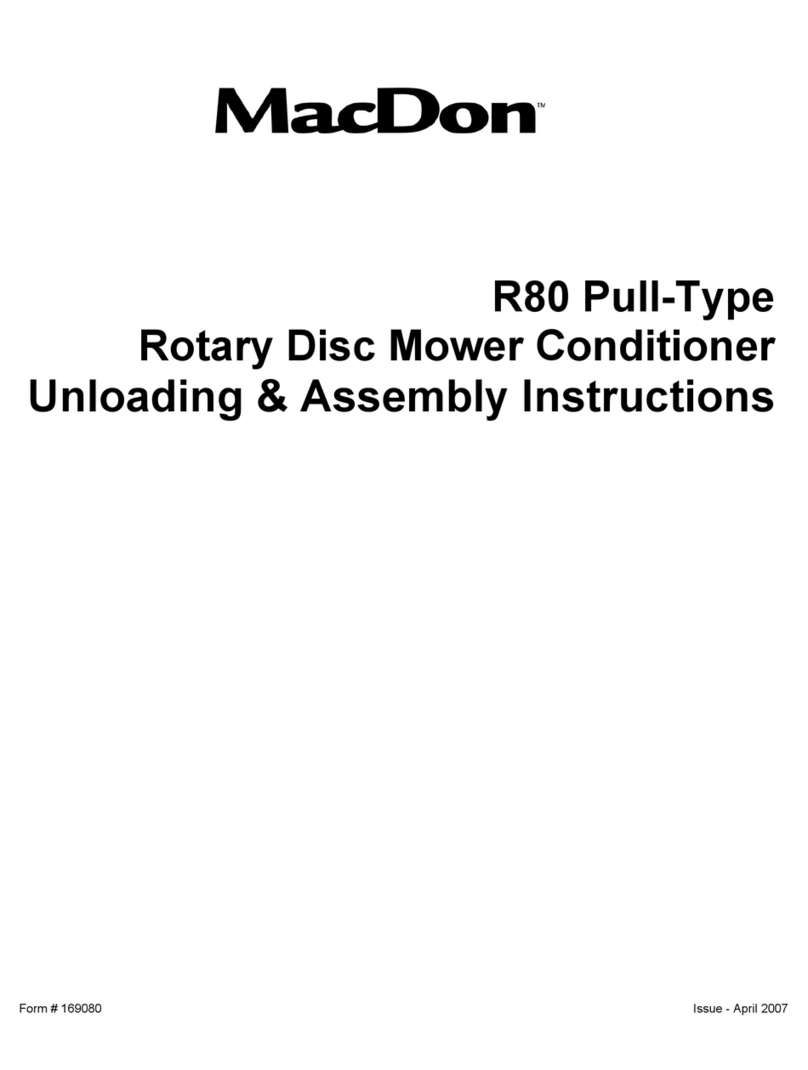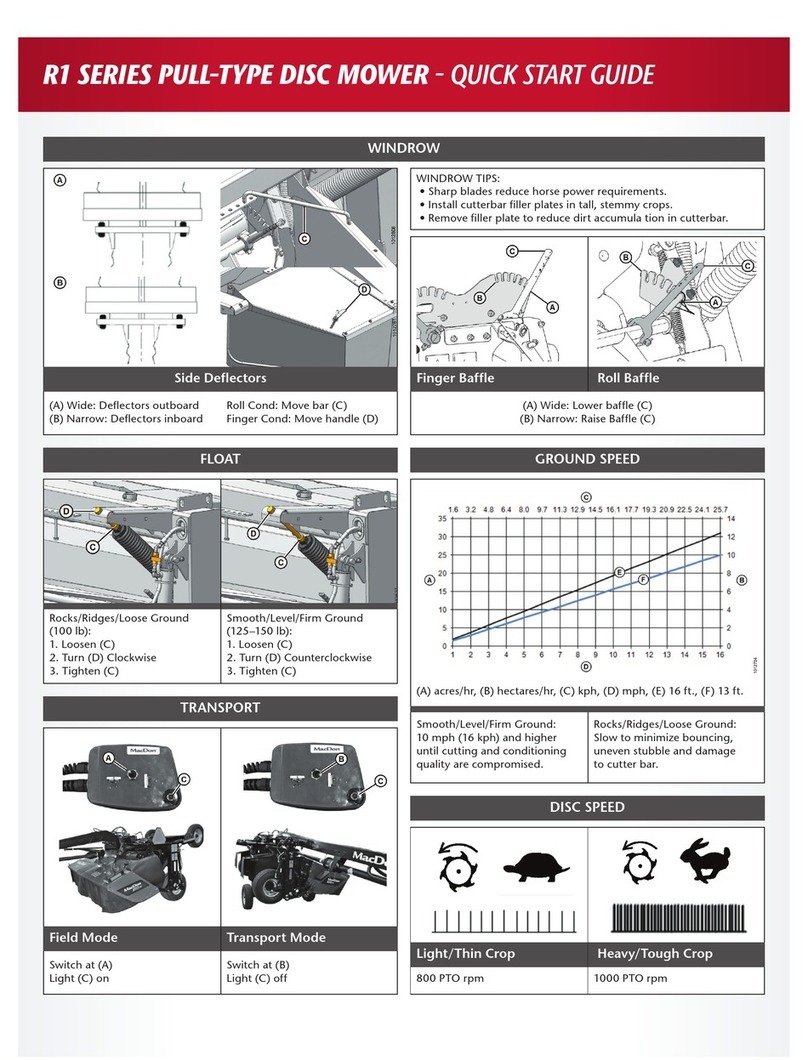
TABLE OF CONTENTS
Introduction...................................................................................................................................... i
List of Revisions ...............................................................................................................................ii
1 Safety.................................................................................................................................................... 1
1.1 Signal Words................................................................................................................................... 1
1.2 General Safety ................................................................................................................................ 2
1.3 Safety Signs.................................................................................................................................... 4
2 Recommended Torques ........................................................................................................................ 5
2.1 Torque Specifications....................................................................................................................... 5
2.1.1 SAE Bolt Torque Specifications................................................................................................. 5
2.1.2 Metric Bolt Specifications.......................................................................................................... 7
2.1.3 Metric Bolt Specifications Bolting into Cast Aluminum............................................................... 10
2.1.4 Flare-Type Hydraulic Fittings................................................................................................... 10
2.1.5 O-Ring Boss (ORB) Hydraulic Fittings (Adjustable)................................................................... 12
2.1.6 O-Ring Boss (ORB) Hydraulic Fittings (Non-Adjustable) ........................................................... 14
2.1.7 O-Ring Face Seal (ORFS) Hydraulic Fittings............................................................................ 15
3 Conversion Chart................................................................................................................................ 17
4Definitions........................................................................................................................................... 19
5 Unloading and Assembling the Mower Conditioner............................................................................ 21
5.1 Unloading Shipment....................................................................................................................... 21
5.2 Setting Up Forming Shields............................................................................................................ 23
5.2.1 Setting Up Forming Shield for Finger Conditioner..................................................................... 23
5.2.2 Setting Up Forming Shield for Roll Conditioner......................................................................... 27
5.3 Repositioning Center-Link Top Anchor ............................................................................................28
5.4 Attaching Hitch to Carrier ............................................................................................................... 31
5.5 Installing Steering Cylinder............................................................................................................. 34
5.6 Attaching Aft Driveline.................................................................................................................... 36
5.7 Attaching Steering Arm.................................................................................................................. 38
5.8 Installing Wheels ........................................................................................................................... 41
5.9 Installing Drawbar Hitch ................................................................................................................. 42
5.10 Installing 2-Point Hitch (Cat. II) Adapter .......................................................................................... 44
5.11 Unpacking Curtains ....................................................................................................................... 46
5.12 Installing Options........................................................................................................................... 48
5.12.1 Installing Endwise Transport System ....................................................................................... 48
Installing Components..................................................................................................... 48
Installing Hydraulics........................................................................................................ 54
Installing Electrical.......................................................................................................... 61
5.12.2 Installing Hydraulic Center-Link............................................................................................... 65
5.12.3 Installing Tall Crop Divider....................................................................................................... 66
5.13 Setting Up The Tractor................................................................................................................... 67
5.13.1 Adjusting the Drawbar ............................................................................................................ 67
5.13.2 Installing Drawbar Hitch Adapter ............................................................................................. 68
5.14 Attaching Mower Conditioner to the Tractor..................................................................................... 69
5.14.1 Attaching with Drawbar Hitch.................................................................................................. 69
5.14.2 Attaching with Two-Point Hitch................................................................................................ 71
5.14.3 Connecting Hydraulics............................................................................................................ 73
5.14.4 Connecting Electrical Wiring Harness...................................................................................... 74
5.15 Removing Mower Conditioner from Shipping Pallet.......................................................................... 75
6 Changing the Conditioner................................................................................................................... 77
6.1 Separating Header from Carrier...................................................................................................... 77
6.2 Removing the Conditioner.............................................................................................................. 81
6.3 Installing the Conditioner................................................................................................................ 83
6.3.1 Installing Conditioner Drive ..................................................................................................... 84
169821 iii Revision D






























